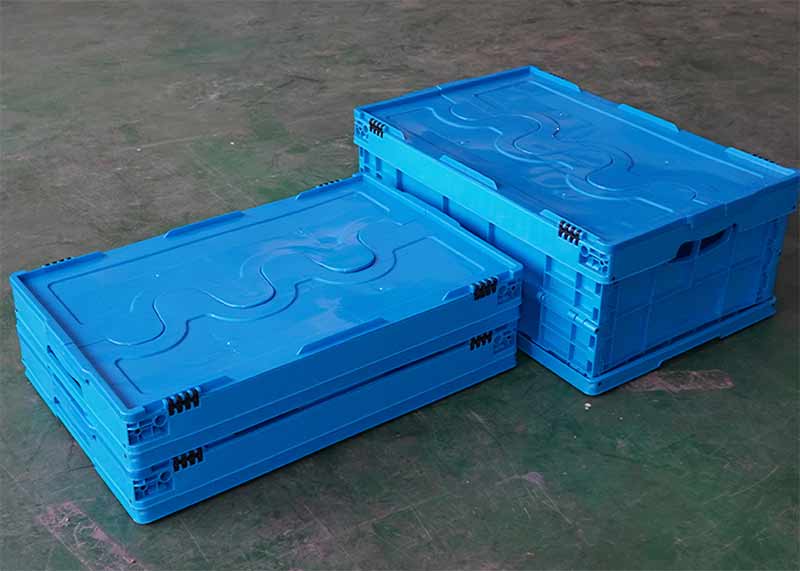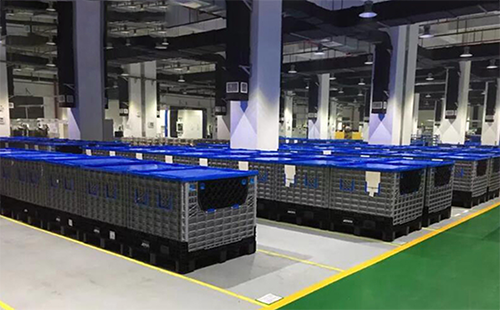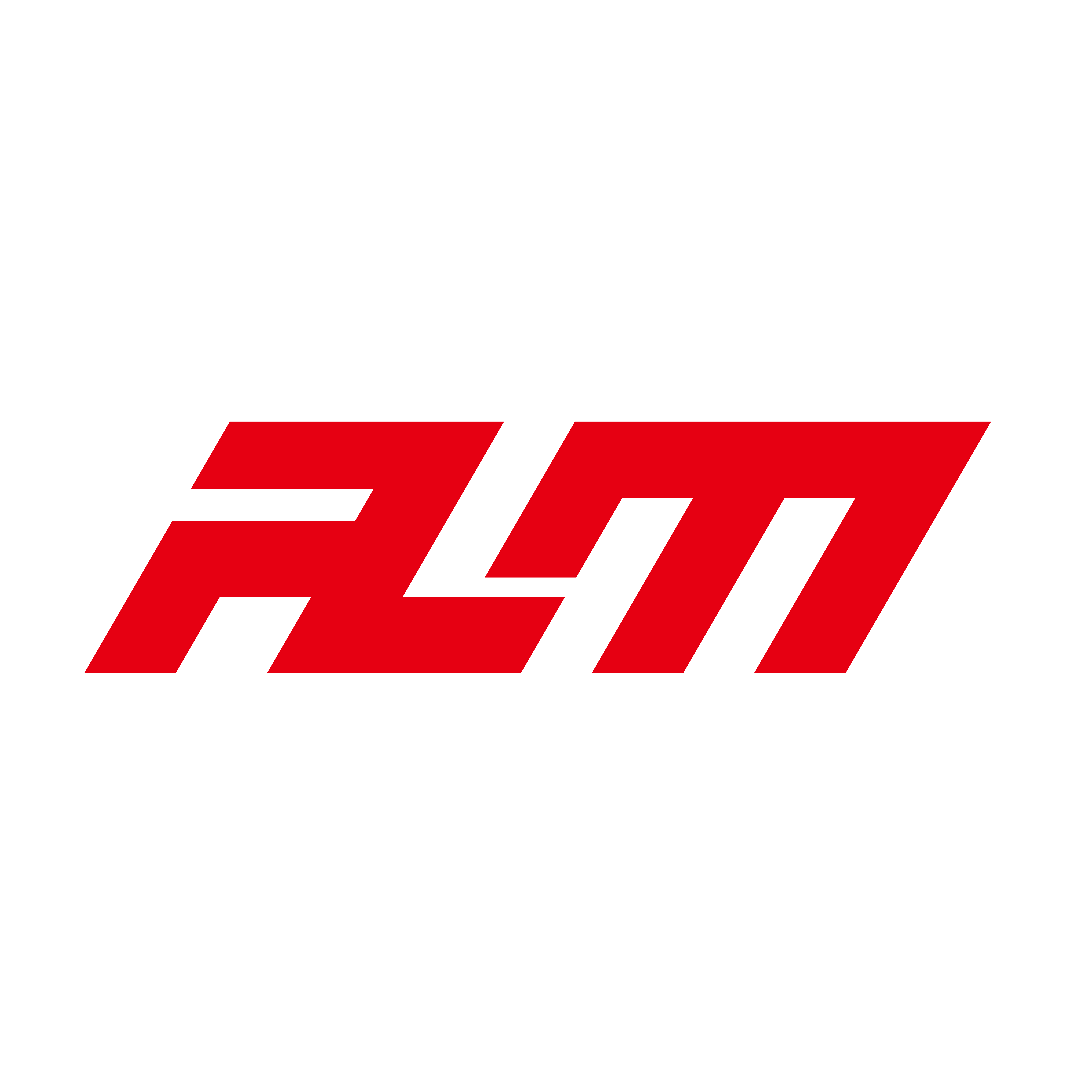In the fields of logistics transportation, warehouse management, and commodity circulation, the choice of packaging carriers directly impacts cost efficiency, resource consumption, and environmental performance. Although traditional corrugated cardboard boxes are widely used, with the increasing popularity of the circular economy concept, reusable folding turnover boxes have gradually become a preferred choice for enterprises. This article will analyze the core advantages of folding turnover boxes over cardboard boxes from four dimensions: durability, economy, environmental friendliness, and convenience of use.
- Durability and Safety: From “Single Use” to “Thousands of Cycles”
Traditional cardboard boxes, made from corrugated paper, are prone to deformation or damage due to moisture and pressure, posing a risk of product damage, especially during long-distance transportation or in humid environments. In contrast, folding turnover boxes are typically made from high-density polypropylene (PP) or polyethylene (PE) materials, offering the following characteristics:
- Pressure and impact resistance: The single box can bear a load of up to 30-50kg, with strong stacking stability, capable of protecting delicate items such as precision instruments, fruits, and vegetables;
- Moisture and corrosion resistance: The sealed design effectively blocks water vapor and oil stains, making it suitable for industries with high hygiene requirements such as food and pharmaceuticals;
- Long lifespan: High-quality turnover boxes can be recycled for more than 300-1000 times, with a lifecycle far exceeding the “disposable” nature of cardboard boxes.
For example, after adopting collapsible turnover boxes, a fresh food e-commerce company significantly reduced the after-sales cost by lowering the product transportation damage rate from 5% to 0.3%.

II. Economy: Significant long-term cost savings
Although the unit price of cardboard boxes is low (approximately 2-10 yuan per box), their single-use nature leads to high long-term procurement costs. Taking a medium-sized e-commerce business with an average daily consumption of 1,000 cardboard boxes as an example, the annual expenditure can reach 700,000 to 3.6 million yuan. In contrast, although the initial investment in folding turnover boxes is high (approximately 50-200 yuan per box), their reusability results in significant long-term cost advantages:
- Recycling cost sharing: The cost per use can be as low as 0.1-0.5 yuan, and the initial investment can be recovered within 3-6 months;
- Reduce loss expenditure: Reduce hidden costs such as product scrap and manual rework caused by damaged packaging;
- Simplify management processes: Standardizing box specifications facilitates inventory management and reduces the labor and time consumption associated with frequent procurement of cardboard boxes.
After introducing folding boxes, a certain household appliance enterprise has seen a 40% reduction in annual packaging costs and a 30% decrease in warehouse space occupation.
III. Environmental friendliness: supporting the “dual carbon” goals and circular economy
Cartons rely on timber resources, with each ton of paper production requiring the consumption of 3-4 tons of timber and a significant amount of water resources. Moreover, the recycling and regeneration process generates high energy consumption and wastewater. Although cartons are recyclable, the actual recycling rate of waste paper in China is less than 60%, and a large number of cartons still end up being incinerated or landfilled.
The environmental value of folding turnover boxes is reflected in:
- Resource reduction: One turnover box can replace 300-1000 paper boxes, reducing deforestation and waste generation;
- Low carbon emissions: Plastic materials can be 100% recycled and regenerated, with a carbon emission reduction of 50%-70% compared to cardboard boxes throughout their entire life cycle;
- Policy compliance: Adhere to regulations such as the EU’s “Packaging and Packaging Waste Directive” and China’s “plastic limit order”, enhancing the company’s ESG rating.
According to calculations, if a logistics enterprise replaces one million paper boxes with reusable containers annually, it can reduce CO₂ emissions by approximately 1,200 tons, equivalent to planting 66,000 trees.

IV. Convenience of Use: Space Efficiency and Intelligent Upgrade
Cartons require manual folding and sealing, which is cumbersome and occupies storage space. Folding turnover boxes, on the other hand, enhance efficiency through innovative design:
- Quick Folding: The box can be collapsed with one click, reducing its volume to 1/4 of its original size, saving 75% of storage and transportation space;
- Tool-free operation: No need for tape or straps for fixation. Some models are equipped with buckles or RFID chips for quick opening and closing as well as tracking management;
- Adaptation automation: Standardized dimensions perfectly match conveyor belts, AGV robots, and intelligent sorting systems, accelerating the digital transformation of warehousing and logistics.
For example, in JD’s “Green Stream Program”, millions of folding boxes are dispatched through the system, achieving an average daily circulation of 3-5 times, and logistics efficiency has increased by 20%.
V. Application Scenario Expansion: From Logistics to Brand Value Empowerment
Beyond traditional transportation scenarios, folding turnover boxes are making their way into more fields:
- Closed-loop supply chain: Collaboratively build a circular and shared network with suppliers and retailers, such as the “Fruit and Vegetable Turnover Box Alliance” of Yonghui Superstores;
- Brand image display: Customize and print corporate logos or environmental slogans to convey green concepts during terminal distribution;
- Adaptation to special industries: Anti-static boxes are used for electronic components, and cold chain insulation boxes are used for pharmaceutical transportation, with functionalities far exceeding ordinary paper boxes.
Conclusion:
Driven by cost, efficiency, and environmental protection, folding turnover boxes are reshaping the packaging industry landscape. Their durability reduces wear and tear, the recycling model cuts long-term costs, their green attributes align with sustainable development strategies, and their intelligent design drives industrial upgrading. For enterprises, transitioning from cardboard boxes to folding turnover boxes is not just a replacement of packaging carriers, but also a pivotal step towards efficient, low-carbon, and refined operations. In the future, with the integration of shared leasing models and Internet of Things technology, folding turnover boxes may become the mainstream solution for logistics packaging.
